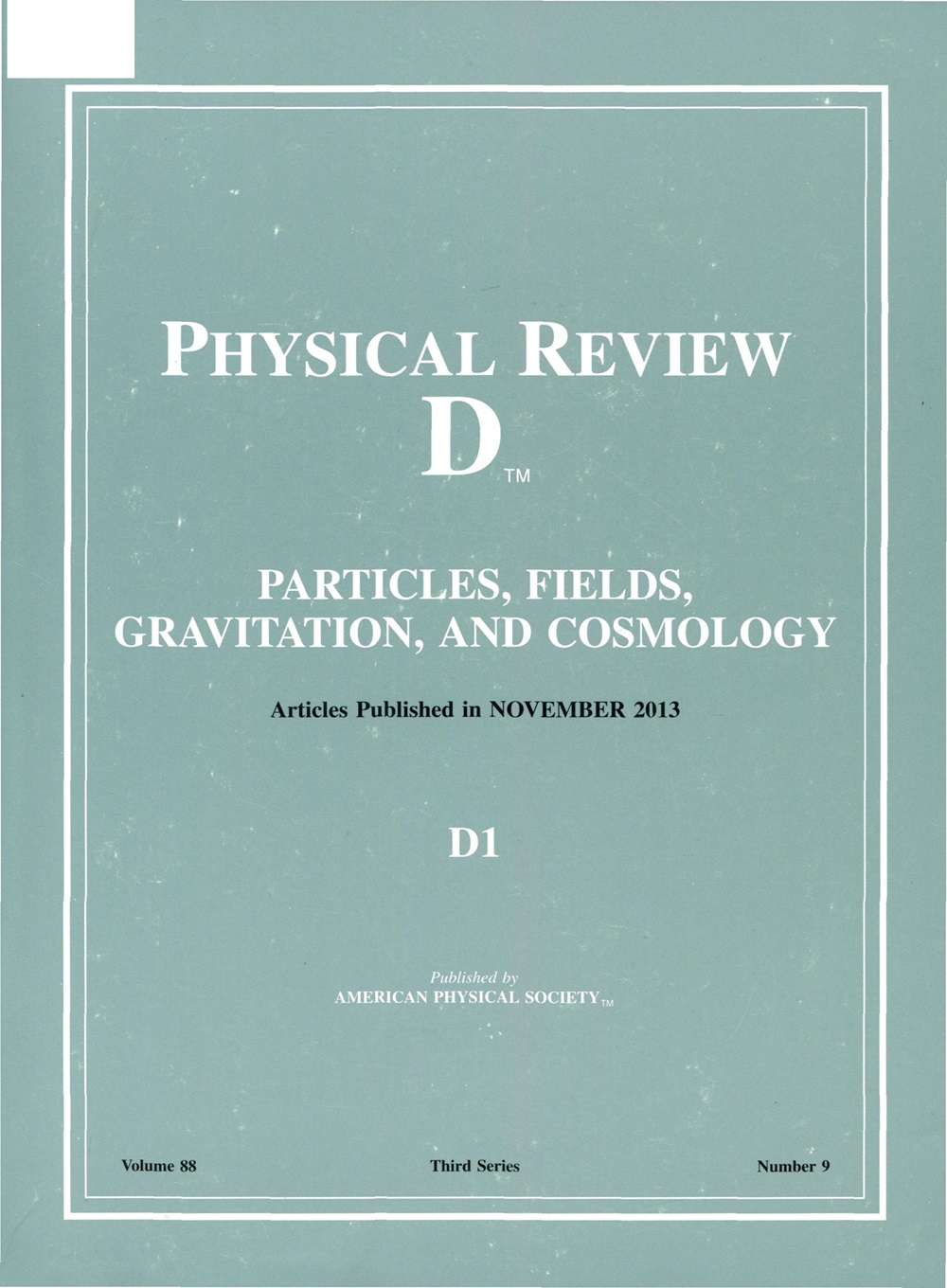可直接探测的希格斯诺暗物质的帷幕徐徐拉开
IF 5
2区 物理与天体物理
Q1 Physics and Astronomy
引用次数: 0
摘要
本文章由计算机程序翻译,如有差异,请以英文原文为准。
Curtain lowers on directly detectable higgsino dark matter
A higgsino could be some or all of the dark matter, with a mass bounded from above by about 1.1 TeV assuming a thermal freeze-out density, and from below by collider searches. Direct detection experiments imply purity constraints on a dark matter higgsino, limiting the mixing with the electroweak gauginos. Using the new strong limits available as of the end of 2024 from the LUX-ZEPLIN experiment, I quantify the resulting lower bounds on gaugino masses and upper bounds on higgsino mass splittings, assuming that the scalar superpartners and Higgs bosons of minimal supersymmetry are in the decoupling limit. Similar bounds are projected for the critical future scenario that direct detection experiments reach the neutrino fog that hampers discovery prospects. Published by the American Physical Society 2025
求助全文
通过发布文献求助,成功后即可免费获取论文全文。
去求助
来源期刊

Physical Review D
物理-天文与天体物理
CiteScore
9.20
自引率
36.00%
发文量
0
审稿时长
2 months
期刊介绍:
Physical Review D (PRD) is a leading journal in elementary particle physics, field theory, gravitation, and cosmology and is one of the top-cited journals in high-energy physics.
PRD covers experimental and theoretical results in all aspects of particle physics, field theory, gravitation and cosmology, including:
Particle physics experiments,
Electroweak interactions,
Strong interactions,
Lattice field theories, lattice QCD,
Beyond the standard model physics,
Phenomenological aspects of field theory, general methods,
Gravity, cosmology, cosmic rays,
Astrophysics and astroparticle physics,
General relativity,
Formal aspects of field theory, field theory in curved space,
String theory, quantum gravity, gauge/gravity duality.
 求助内容:
求助内容: 应助结果提醒方式:
应助结果提醒方式:


